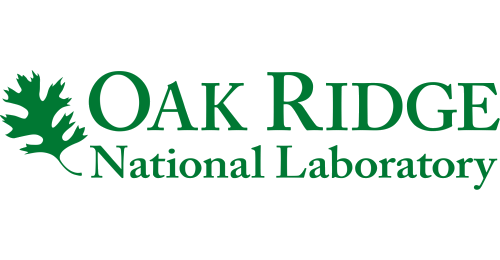Conference Agenda
Overview and details of the sessions of this conference. Please select a date or location to show only sessions at that day or location. Please select a single session for detailed view (with abstracts and downloads if available).
|
Session Overview |
| Session | ||
Workshop 1- Building Enclosures
| ||
| Session Abstract | ||
|
8:00 - 8:50 - Session 1
Title: Update on the Current Codes What one Affect the Air Barrier Industry
Abstract: Following the code change process is a taunting task and missing on code change can have a huge impact on your business, This presentation will have an overview of the changes that were implemented over the past code cycle and cover some of the work that is being done for future code revisions.
Presenter Theresa Weston - Confirmed
8:50 - 9:00 - break
9:00 - 9:50 - Session 2 Totle: High Temp and Compatibility of Membranes
Abstract This presentation aims to answer a few questions: what does ‘high temperature’ mean; are the standards that are currently being used enough to support those claims; and do materials that claim high temperature have the best chance of meeting the physical requirements of today’s-built environment? Existing standards addressing elements of elevated temperature, such as accelerated aging, sample conditioning (AAMA 711 section 5.5), and visual assessment (ASTM D1970 section 7.6) are generally inadequate and incomplete. This presentation looks at common standards and claims regarding “high temperature” and put them in the context of their respective applications.
Presenter: Benjamin Meyer, AIA, NCARB, LEED AP Confirmed Building Envelope Business Director Siplast 9:50 - 10:00 - break
10:00 - 10:50 - Session 3
Title: ABAA Research – Yesterday. Today and the Future
Abstract: Air barriers are relatively new in the United States. In 2001, when ABAA was formed, there were no test methods or material specifications specifically for air and water-resistive barriers. Over the decades, the industry raised many questions on materials and installation issues. ABAA continues to conduct research to determine the answers to the questions being raised. This presentation will cover some of the research that has been conducte, what is being done now and more importantly, what is scheduled for the future. You will be asked to provide input into what needs to be conducted.
Learning Objectives:
Presenters: Sarah Flock and Andrew Dunlap - Confirmed
10:50 - 11:00 - Break
11:00 - 11:50 pm - Session 4 Title: Warmer, Wetter, and Windier Future Proofing Your Building Enclosure for a Changing Climate
Abstract: Building enclosure design is grounded in the ability of the envelope to moderate the indoor environment from outdoor environmental conditions to establish a safe, comfortable, and operational environment. The design of any given building enclosure must be responsive to the project-specific climate and adapt to changing climatic conditions, including both chronic changes to climactic norms, and management acute and intense weather events. Climate variables such as increased rainfall, rising or falling temperatures, humidity, extreme winds, or intense storms or flooding should prompt a reciprocal enclosure design response to future proof the project. This presentation will begin with an overview of climate future forecasting and key statistics to inform project requirements followed by a review of specific interactions between climate vulnerabilities and their associated climate statistics. Examples include Flood or Precipitation Scenarios, Combined Temperature and Air Quality Scenarios, or Combined Wind, Temperature and Precipitation Scenarios The discussion will focus on the implementation of specific enclosure design and system selection choices from schematic design through construction and integration. Beginning in early design, building material and assembly selection must prioritize increased resiliency and durability, including redundant passive systems where necessary. Consideration for ongoing maintenance and adaptation of the existing building stock is crucial. Methods discussed are relevant to new builds and renovation of existing building stock alike. Robust enclosures well adapted to a perform in a changing climate will also produce ancillary benefits; typically enhancing occupant comfort and experience, and making a significant contribution towards thermal load reduction, annual energy use and cost, as well as operational carbon emissions. Finally, the design approach must consider the ability to maintain comfortable or operable interior conditions during catastrophic events where some of our buildings becoming places of respite during our most difficult days.
Presenter: Jillian Burgess, RA Confirmed Technical Director & Associate Principal RWDI
11:50 - 12:45 pm Break
12:45 - 1:45 pm - Sessions 5 Title: Whole Building Air Leakage Testing Updates
Abstract: Whole building testing has become part of the Building Code requirment in many states. More importantly, whole building testing is part of many construction contracts as the realization of the importantance of confirming that the building has a low air leakage rate. This presentation will cover what has happened in the industry over the past few years and what is expected in the coming years.
Presenter Denali Jones - Confirmed
1:45 - 2:00 Break
2:00 - 3:00 - Session 6 Low Carbon Buildings Abstract: How much focus should we put on low embodied carbon building materials? Is the material with the lowest value the right choice for your building? This presentation covers what you need to consider when choosing low carbon building materials.
Presenter: John Straube, P.Eng. Ph.D. - Confirmed Principal, Senior Specialist RDH Building Science Inc.
| ||
| No contributions were assigned to this session. |

